What is prostatitis is known to many men. The disease manifests itself by the frequent need to urinate, pain, erectile dysfunction, and other symptoms that indicate the pathology of the genitourinary system. For more diagnosis is necessary to consult a urologist who discovers the cause of diseases, and explain what the disease is, what its name means, what are the symptoms and treatment.
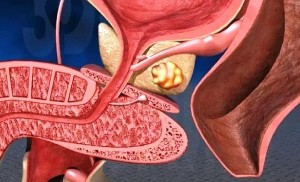
Prostate
The prostate is a gland unpaired organ, formed by tissue glandular and fibrino-muscle film, that is, in front of the pelvic region. The top is in contact with the bladder, back — straight, and the front of the pubic bone.
The main objective of the prostate, highlighting the special secret that ensures sperms viability and motility.
This substance is produced acinus – small lobules surrounded by a muscular sheath.
Other functions of the prostate are:
- the protection of involuntary urination;
- the prevention of reflux of ejaculate into the bladder;
- prevention of the infection of the upper parts of the urinary system (kidneys, ureters).
The prostate function is controlled androgens, estrogens, steroids and pituitary hormones.
The description of the disease
Male prostatitis (prostatitis is a bad spelling) is a common pathology of the prostate accompanied by inflammation, disorders of urination and sexual disorders. The inflammation causes narrowing of the channels of the prostate prevents normal output of prostatic juice and causes the stagnation.
Very often the diseases of the gland of the prostate in men diagnosed from 25 to 50 years. Sometimes disease makes itself felt, sooner or later.
Causes
Prostatitis in men develops due to the following reasons:
- Not infectious. Most often, the deterioration of the prostate produces a violation of blood flow and lymph flow in the gland of the prostate, and the congestion associated with a rare ejaculation. Sometimes, the disease develops because of too frequent sex or regular agitation (for example, the rider).
- Infectious. Inflammation of the gland of the prostate develops in the background of the infection. Can be bacteria, virus or fungus that enters the prostate via the blood or lymph from the urethra or remote infected sources (throat, teeth, maxillary sinuses).
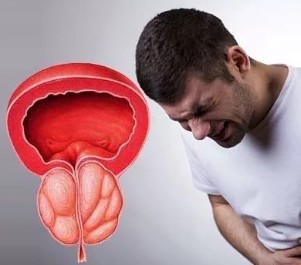
The factors that cause the prostatitis in men are:
- hypothermia;
- injury;
- the genetic predisposition;
- sedentary lifestyle or regular exercise fatigue;
- regular stress;
- bad habits;
- poor nutrition;
- insomnia, prolonged sleep deprivation;
- a weak immune system;
- chronic infectious processes;
- the tooth decay.
The main cause of the disease is considered to be a violation of the exit of blood capillary, which leads to the stagnation, reduction of the immunity of the local and the reproduction of the bacterial flora.
The influence of factors, adverse, aggravating the inflammation of prostate prolongs the duration of treatment and contributes to the development of complications.
Types and symptoms
Inflammation of the gland of the prostate seen in:
- pain in the pelvic area (when the output of the urine, ejaculation, defecation);
- frequent need to urinate;
- a discharge of blood, mucus, pus from the urethra;
- turbidity of the urine;
- a reduction of libido and other problems.
The severity of clinical signs depends on the cause and the form of the disease.
Sharp
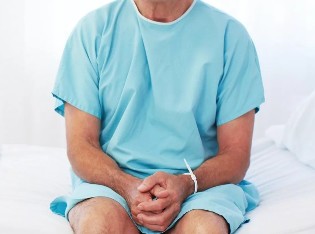
Acute inflammation of the prostate, usually accompanied by an increase in body temperature (axillary, rectal) and signs of poisoning (headache, joint pain, chills, nausea).
Patient of the prostate squeezes the surrounding tissue, the nerve endings and causes:
- constipation;
- violation of urination, up to the full completion of the exit of the urine;
- pain in the lumbar region, the scrotum, the groin.
Prostatitis acute in men often appears in the background of infection of the prostate pathogens.
Important! Sometimes an acute inflammation of the prostate appears on a background of carried out before the biopsy.
Chronic
Inflammation of the prostate often detected accidentally during routine examination or examination for other diseases.
The progression of the disease leads to an alteration of the morphology and the functioning of the gland of the prostate that appears:
- pain;
- dysuria;
- of sexual disorders.
Calculous
This is one of the most common complications of chronic form of the disease that is characterized by the formation of stones in the acinus.
What is the affected prostate in men who had been calculous inflammation depends on the severity. The main clinical signs of emitting a dull pain pain in the groin, pubis and testicles.
Prolonged lack of treatment can lead to the development of inflammation of the seminal vesicle, abscess of the prostate, MS prostate.
Stagnant
What type of disease prostatitis and why it develops, you know that not all men.
This type of affected individuals who:
- move a little;
- bad habits;
- used for most of the day to spend sitting;
- do not lead a regular sexual life.
- the practice of interrupted intercourse.
The symptoms of the inflammation of the prostate in the background of the stagnation or even identical manifestations and chronic calculous form of the disease, therefore, the diagnosis requires laboratory and instrumental diagnosis. The first sign that manifests congestive prostatitis in men, erection impairment.
Infectious
The cause of the disease is clear in the title. Most often, prostate combat the bacteria, rarely viruses and fungi. In the majority of cases of infectious inflammation of the gland of the prostate is a complication of other forms.
This leads to a decrease in the local or General immunity against:
- hypothermia;
- other acute or chronic infections;
- of cancer tumors;
- autoimmune diseases;
- disruption of organs adjacent;
- incorrect style of life.
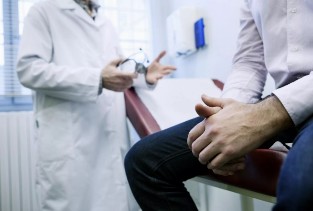
What is the prostate in men, that were in the inflammation of the infectious type, depends on the evolution of the disease. Often the complaints are reminiscent of symptoms of acute or chronic prostatitis.
Purulent
In advanced cases in the pathological process involved the entire body.
The first (catarrhal) form of inflammation purulent occurs with the deletion of the symptoms resembles to the symptoms of diseases of the bladder – cystitis. The progression of the pain is the worst and appear pronounced signs of intoxication.
Abscessed form of the disease is more severe and often leads to peritonitis, sepsis and death.
Diagnosis
In the primary treatment of the gland inspected through the anus. During palpation the doctor determines the size, the structure and the contours of the body.
In this stage is the preliminary diagnosis that you want to confirm by means of the examination, including the following laboratory methods:
- deployed and biochemical analysis of blood;
- determination of PSA (prostate specific antigen);
- clinical and bacteriological study of the urine, the secretion prostatic, smear of the urethra;
- sensitivity to antibiotics;
- semen analysis;
- detection of C-reactive protein;
- cystoscopy and histology puncture content.
From instrumental used:
- rectal ultrasound;
- CT or MRI of the prostate and other organs of the pelvis;
- the biopsy.
The diagnosis is carried out in public or private laboratories.
Principles of treatment
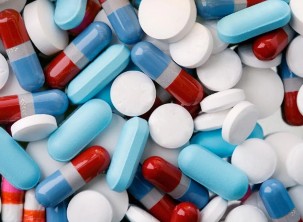
Where and how to treat the inflammation of the prostate, the doctor will decide based on the results of the tests. If the patient's condition is satisfactory, then you can make a visit to the outpatient and home medications. Otherwise, the doctor explains to the man the risks associated with the disease, and insisted on hospitalization. In severe cases, the patient hospitalitynet extra.
Integrated
Conservative treatment includes taking medicines to remove the cause of the disease, the congestion and the inflammation of the gland of the prostate.
The list includes:
- antibiotics (depending on the results of the antibiogram);
- anti-inflammatory non-steroidal origin or corticosteroids;
- immunomodulators;
- vitamins and minerals;
- vasodilator medications (if not contraindicated).
When severe pain prescribe analgesics or antispasmodics.
After the elimination of the acute phase of the resort to techniques of physiotherapy:
- the prostate massage;
- the electrophoresis;
- microwave therapy;
- ultrasound.
In severe cases, the carrying out partial or complete prostatectomy (removal of the prostate). Prostatitis with stones treated in the same pattern, but massage is an androgen-dependent organ is absolutely contraindicated.
At home
What is prostatitis and how to treat it, you want to know many men. In outpatient treatment has not finished emergency admission to the hospital, you need to implement all the recommendations of the doctor to take the medications prescribed, avoid precipitating factors and not self-medicate. In addition to the basic therapeutic scheme is a useful medicinal plant, which selects the doctor.
To eliminate the disease healthy:
- the chamomile;
- peony;
- the seeds and leaves of the banana;
- stinging nettle;
- burdock root;
- the seeds of pumpkin.

Prevention
The best prevention of prostatitis in men – to regulate the access to a doctor and fit lifestyle, which should include:
- daily physical exercise;
- regular sexual intercourse;
- proper nutrition;
- a full night of sleep.
Stress, bad habits, and other predisposing factors, on the other hand, should be eliminated. Prostatitis in men often leads to erectile dysfunction.
To eliminate the disease, prescribed drug of the group inhibitors PDE-5. If this does not help, you need advice.




































